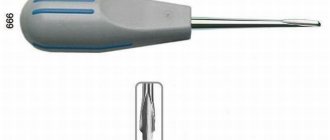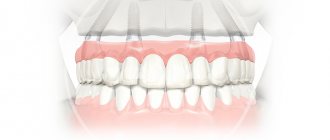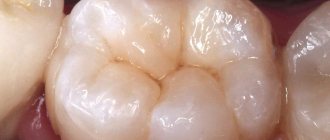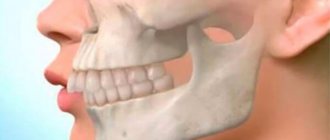27.01.2020
Dear readers, we have prepared an interesting article for you - a review about teeth splinting and answers to related questions. From this material you will learn:
Teeth splinting - what is it? Indications for using the splinting technique; splinting of mobile teeth; what techniques are used; what materials are used; how much does the procedure cost?
WHY ARE TEETH SPLINTED?
We collected the main indications for this procedure and came up with five points:
- With a non-standard direction of tooth growth.
- In case of displacement of teeth in a row.
- For chronic periodontal diseases that cause bleeding.
- In cases where a large amount of deposits accumulate around the tooth root, which can lead to its destruction and tooth loss.
- The presence of deep gum pockets, the appearance of which has led to significant exposure of the roots of the teeth.
SPLINTING FOR PERIODONTITIS, PERIODONTOSIS, DENTAL INJURIES
Periodontal disease is one of the most common problems dentists encounter. Therefore, among the “top” reasons is splinting teeth for periodontitis – an inflammatory disease of periodontal tissue. This disease causes the roots to become exposed. Teeth begin to become loose, which can ultimately lead to tooth loss.
The main task is to strengthen teeth that are starting to become loose. Moreover, it is important to do this at the initial stage. There are several solution options - high-strength fiberglass threads, prostheses, etc.
Often, patients consult a doctor only when the disease is chronic and reaches a moderate or even severe stage. This is expressed not only in unpleasant sensations, but also in the exposure of the subgingival part of the tooth by a quarter or more. Mobility directly depends on how much bone tissue is atrophied in a particular area.
You can check the condition of the bone tissue using a regular x-ray of the jaw area.
Separately, splinting of teeth for periodontal disease, which is not an infectious disease, is considered. There is still no consensus regarding the causes of this pathology. Among the main options:
- Hereditary factor;
- VSD;
- Diabetes;
- Atherosclerosis;
- Hypertonic disease.
The symptoms of periodontal disease and periodontitis are largely similar, although the diseases themselves have very little in common. Tooth mobility occurs only in severe cases of the disease, when the root is exposed by 50% or more.
The materials used include silk, fiberglass and polyethylene threads.
Specialists select them by color so that there is no obvious difference in shade from the tissue of the tooth itself. The choice of technique depends on many nuances: the stage at which the disease occurs, bleeding, general hygiene, the presence of hard deposits on the teeth, tooth mobility, violation of the position of the teeth in the row, the depth of the formed gum pockets.
Another area of work is splinting teeth for injuries. This may include bruises and fractures of the jaw, or other injuries leading to tooth dislocation. The splint allows you to fix it and secure it in such a way as to avoid loosening and subsequent falling out.
Patients often exhibit a symptom such as fan-shaped discrepancy of teeth. To eliminate it, thread-like materials are also used, placed in the sawn furrow and fixed with a filling. The advantage of this method is that the load is evenly distributed between the teeth.
Indications for the procedure
The following indications are defined:
- instability of teeth caused by pathology of periodontal tissues;
- the need for preventive measures to prevent loss of stability;
- consolidation after orthodontic treatment;
- instability after injury.
In a short period of time, splinting allows one to obtain good therapeutic results. The decision to carry out the procedure is made only by the doctor after studying the results of x-rays and other studies.
When drawing up a treatment regimen, the doctor takes into account the severity of the defects, the condition of the oral cavity, the presence and stages of gum disease, bite characteristics, the patient’s age, etc.
If there are doubts about the advisability of using splints, the specialist offers alternative treatment methods.
Splinting is not carried out in case of pronounced defects and an excessive number of unstable teeth, as well as the rapid progress of diseases of the oral cavity and gums.
HOW IS THE PROCEDURE FOR INSTALLING A SPRINT THREAD?
If a patient requires splinting of the upper jaw teeth, the doctor performs the procedure in several stages:
- An anesthetic injection is given. The drug is selected individually, taking into account sensitivity, allergies, pregnancy and various diseases for which painkillers with adrenaline cannot be used.
- A furrow of the required depth is made in the chewing surfaces.
- A tape is laid in the furrow;
- The cuts are filled with a color-matched filling material. There are now an excellent selection of options that can be cured chemically or cured using a light curing lamp.
For splinting the anterior teeth of the upper row with mobility and/or divergence, the cutting depth is usually 2 mm, the height is similar. This option allows you to eliminate too large interdental spaces.
The doctor determines the general condition of the dentition in order to make a final decision on exactly how many teeth will be in the splint.
If the lateral teeth are splinted, then the cut is made on the chewing surface. The further procedure is carried out according to the same principle.
If a patient is prescribed preventive splinting of the teeth of the lower jaw, then it is performed using a similar technology. But when laying the tape, it catches canines/other teeth that do not have mobility problems.
Before installing a splint, it is important to completely remove soft and hard plaque. Stones on the visible surface of the tooth and on the root itself are one of the main reasons for the development of periodontitis, causing tooth mobility, bleeding gums and other unpleasant symptoms.
Therefore, the doctor must refer the client to hygiene procedures. To prevent problems with enamel, increased sensitivity, etc. after them, remineralization therapy can be prescribed. This includes both the application of special compounds and the use of preparations containing substances that help accelerate the recovery process and saturate the enamel with the necessary compounds.
If the reason for splinting is periodontitis, courses of anti-inflammatory therapy are carried out in parallel. It can be local or general.
In the first case we mean:
- Antiseptic rinses and baths;
- Applications;
- Physiotherapeutic procedures – electrophoresis, laser;
- Correct selection of toothpastes;
General therapy refers to drug treatment.
Usually we are talking about a course of antibiotics in the form of tablets or intramuscular injections.
Duration and results of the procedure
During the installation process, dental splints are fixed with photopolymer fillings matched to the color of the teeth, therefore:
- look aesthetically pleasing and almost invisible in the mouth;
- do not cause discomfort;
- cover the tooth by only 2 mm and leave access for hygienic procedures and therapeutic intervention.
Splinting is indicated for atrophic processes in the periodontium and the resulting mobility of teeth, bleeding and gum recession (enlargement of pockets and exposure of tooth roots). It is also used for bruxism and jaw bone fractures.
Duration of treatment
Splinting structures are installed:
- temporarily (from 6 months to several years) – as a preventive measure after treatment of periodontal diseases;
- on an ongoing basis - for chronic periodontitis, which is accompanied by tooth mobility and atrophy (thinning) of the alveolar processes in their roots;
- for a period of 3 to 6 weeks if jaw fractures are diagnosed based on X-ray results.
ABOUT THE MATERIALS
So, let's move on to the important point - the raw materials used when applying a splint to mobile teeth. There are many requirements for it:
- Biocompatibility with natural tissues;
- Hypoallergenic. Not all materials in this regard can be 100% safe for human health.
- Hygiene;
- Ability to withstand mechanical loads.
There are also requirements that are independent of the choice of material. These include:
- Invisibility, allowing you to maintain aesthetics.
- No problems with diction and eating.
- Reliable fixation of mobile teeth. They should not move in any of the possible directions.
- Reliable fixation on the teeth themselves.
It is also very important that the fixing splint does not interfere with brushing teeth and gums and does not injure soft tissues.
Among the most popular options is strengthening teeth with fiberglass tape, as well as its analogues made of polyethylene and silk.
Tire production times are always individual.
In some cases, it is made right in front of you, in others it requires time and work in a dental laboratory.
After the fiberglass thread cures, it turns into a strong element - a beam that holds the teeth together. At the same time, the effect of load distribution acts in such a way that even when biting on just one tooth, the load is divided among all teeth united by the splint. This is important to ensure that the teeth maintain contact with each other.
Many people underestimate the importance of this moment. However, contact greatly influences the rate of bone atrophy, which is observed in many patients
Prices
The final cost of the procedure depends on the technique used, the clinical picture of the disease or the specifics of the injury.
Some techniques require preparatory measures (making an impression, prostheses, etc.). The technology requires mandatory radiography, the cost of which must be taken into account.
Average prices:
- Splinting the front six teeth with fiberglass tape – 6 thousand rubles. The same procedure for three lateral teeth – 4.5 thousand rubles.
- Cable splinting of three teeth – 9 thousand rubles.
- Splinting using crowns - from 3.5 thousand rubles per crown (preparatory measures are calculated separately).
- Clasp splinting – 25 thousand rubles.
USING ARAMID FIBER
Also very popular is cable splinting of teeth with aramid thread, which has enormous strength. Experts have conducted several studies, during which it turned out that aramid fiber has eight times greater strength than piano steel with similar parameters.
- This technique allows you to achieve excellent aesthetics and correction of the dentition in case of displacements caused by periodontal diseases, injuries and other reasons.
- Aramid fiber is superior in durability to any other thread.
- The material does not enter into chemical reactions with saliva and food, and has excellent biocompatibility.
- Bone tissue stops rapidly atrophying.
- Large gaps between teeth are eliminated. Consequently, the space between them is not clogged and the overall aesthetics are improved.
- The natural load on the dentition is restored.
- You can simultaneously install dentures to replace lost teeth.
Techniques
The appropriate treatment method is decided together with the treating dentist after a thorough examination of the oral cavity.
Using fiberglass thread
Fiberglass splinting is used for pronounced defects caused by periodontal diseases, loss of stability after an injury, or due to individual physiological characteristics.
Also, the method of prosthetics with fiberglass thread allows you to consolidate the results of correction after using braces, remains stable against stones, exposed roots and severe bleeding of diseased gums.
This material is most in demand, as it is chemically inert and does not cause rejection.
During the work, the specialist performs the following manipulations:
- eliminates plaque and deposits that impede installation;
- saws a small recess (2 mm) into which the fiberglass thread is placed;
- covers the thread with a polymer material;
- acts with photopolymer until hardening;
- polishes the surface.
Advantages of the fiberglass method:
- Operational installation. The fiberglass thread is installed in one session.
- No adverse effects on diction and chewing ability.
- The load is distributed evenly.
- Maintaining an aesthetic appearance.
- Hypoallergenic material.
- If necessary, the fiber can be easily removed or replaced.
- Durability and reliable fastening.
- Reasonable prices.
Splinting of lower anterior teeth
Splinting of anterior teeth has the best results in terms of stability. When splinting the lower front teeth, a depression is cut out on their inner surface, into which the specialist places a fiberglass thread.
Afterwards, the material in the recess is covered with a light composite. The distance to which the prosthesis is fixed depends on the condition of the entire anterior dentition.
In addition to loose ones, the splint must also have stable teeth (usually fangs). This takes some of the stress off those who are unstable when chewing food.
Splinting of the upper anterior teeth
Splinting of the upper front teeth is carried out in case of loss of stability, risk of fan-shaped discrepancy, or direct discrepancy of the upper front teeth.
Usually the recess is cut out on the front side, then the process is identical to securing the lower teeth.
Splinting using aramid thread (cable-stayed)
Cable splinting using aramid thread and light-curing composites has been successful in dental practice for about twenty years.
This is a fast and reliable method, designed for trouble-free use of the structure for several years.
Aramid thread is characterized by exceptional strength (8 times greater than the strength of piano steel), excellent compatibility with composite materials and low elasticity, which together makes the structure reliable and durable.
The threads do not react with food and saliva, are not capable of abrasion and do not destroy the enamel coating.
It happens that you smell acetone from the mouth of an adult; our article will help you find out the reasons for its appearance. And here are the main symptoms of inflammation of the periosteum of the tooth.
Cable-stayed splinting technology consists of the following stages:
- an injection of an anesthetic drug;
- cutting out a recess (0.5 mm) on the inside of the teeth slightly above the gums;
- laying aramid thread in the recess;
- covering the thread with a composite material.
This technology is described in more detail in the following video:
During work, teeth and gums are minimally injured, and further cleaning and dental treatment will not cause inconvenience.
The tone of the composite is selected in accordance with the natural color, which allows you to maintain aesthetic appeal.
The technique ensures safety and minimizes the risk of atrophy of the jaw-bone tissues even with severe instability, successfully hides small defects and evenly distributes the load on the jaw.
Simultaneously with cable-stayed splinting, therapeutic and surgical processes are allowed.
Splinting using fixed prostheses
Permanent dentures are not used in all cases; it depends on the clinical picture of the disease, the condition of the oral cavity, the presence of specific deposits on the teeth, the stage of displacement, etc.
An undeniable indication for the installation of a fixed structure is instability due to atrophy of the alveolar process of no more than ¼ of the length of the tooth root.
In more severe phases of the disease, therapeutic treatment is required before prosthetics.
The advantages of durable products include a reduction in pressure in all directions of action, which removable structures do not provide.
Splinting using removable dentures
The best option if one or more teeth are missing. Short-term dentures provide fixation for both loose and almost falling out teeth, while simultaneously filling in the place of missing ones.
The design is created in accordance with the individual physiological characteristics of the patient. A mandatory indication for removable immobilization is a jaw fracture. The material for the tire is plastic or metal.
What are the consequences for the body from rotten teeth? We'll find out in our next article. In this review, we will find out whether it is possible to treat tongue tip using folk remedies.
Here: - we talk in detail about what a panoramic photograph of teeth is.
HOW TO STRENGTHEN MOVABLE TEETH WITH CROWNS
In modern dental practice, various types of dental splinting are offered, differing in indications and effectiveness. One of them involves the use of metal crowns, or their metal-ceramic and metal-free analogues.
The crowns are connected to each other, thereby eliminating mobility. However, in order to perform the procedure, the nerves are removed from the teeth. Therefore, doctors consider all options before settling on grinding teeth for crowns. Let’s not forget that this method is much more expensive.
REMOVABLE PROSTHETICS AS A METHOD OF SPLINTING
If, in addition to loose teeth, there are also “gaps” formed due to the loss of several teeth in a row, the use of removable dentures is effective. They are used when it is necessary to replace 1–3 teeth in a row. The doctor examines all the nuances regarding the general condition of the dentition, the number of missing teeth, and the presence of bite problems. There is also a dependence of the choice on the age and other individual characteristics of the patient.
There are many materials for making dentures. Some are universal, but expensive. Others are affordable, but are far from ideal in a number of ways, or may cause allergies in some people.
Typically, dental splinting with a removable denture is often chosen as a temporary measure necessary for injuries such as a jaw fracture. During the rehabilitation period, this design provides reliable stability.
USING CLASS DENTURES TO ELIMINATE TEETH MOBILITY
A technique such as clasp prosthetics can be recommended in cases where other options are excluded for medical reasons, or are not suitable due to anatomical and other features. Eg:
- The patient has a deep bite;
- Signs of bruxism are observed;
- Violation of the natural position of the teeth;
- Periodontal diseases causing bleeding from the gums;
- Displacement of teeth in a row;
- The appearance of periodontal pockets and significant exposure of roots;
- Loss of more than one tooth in a row where there is no supporting tooth for fixation;
- The need for effective redistribution of chewing load.
The design of the clasp prosthesis used for splinting is an arch with several types of fixing elements - clasps and processes, fixed to the teeth and holding those teeth in the row that have become mobile. Crowns are placed on the supporting teeth.
Features and advantages of a splinting clasp prosthesis:
- Does not cause discomfort when wearing;
- Significantly slows down the process of loss of bone and periodontal tissue;
- Does not require long-term adaptation;
- Has compact dimensions;
- Doesn't interfere with eating or talking;
- Does not change the taste of food;
- Has a reliable design
The procedure for manufacturing and installing a tire based on a clasp design is carried out in several stages.
First of all, the doctor examines the condition of the oral cavity, periodontium, jawbone, and takes photographs.
After this, the specialist has data on his hands, on the basis of which a preliminary prosthetic scheme can be determined.
Next, it is necessary to make impressions of both jaws and create a model, with the help of which the frame will subsequently be made. Then they try it on and make an exact adjustment. It is important that the patient does not experience discomfort while wearing the prosthesis.
Pros of splinting
The positive aspects of the procedure include the following:
- The entire dentition is restored.
- Existing tooth mobility is completely eliminated.
- Effective even for age-related pathologies.
- Corrects mechanical damage.
- In case of periodontal disease, splinting helps to fully preserve the functional ability of the teeth.
- The procedure does not cause atrophy of the jaw bone.
- After installing the splints, the chewing load in the oral cavity is distributed evenly.
- With the help of splints it is possible to reduce large gaps between teeth.
- The procedure allows you to restore lost crowns after prosthetics.
- Healthy teeth are preserved during splinting, since the procedure does not require grinding or depulpation.
- Splinting structures are durable, reliable and durable.
POSSIBLE COMPLICATIONS AFTER THE SPLINTING PROCEDURE
Unfortunately, sometimes unpleasant situations arise in which the patient develops complications. There are several options for negative developments:
- In some cases, the groove for the tire is too deep. This leads to opening or damage to the pulp chamber. After some time, the patient develops pulpitis - inflammation of the dental nerve. Typically, in this case, the nerve tissue has to be removed and the tooth filled.
- Because Before the procedure, doctors perform professional cleaning, the thickness of the enamel decreases. This leads to the fact that the patient's teeth may begin to react to cold and hot.
- If the tire becomes deformed during polymerization or overheats, it may break.
- If bacteria remain under the structure, caries may develop, which remains undetected for a long time. Often, patients seek help from a dentist already at the stage of pulpitis development.
- Inflammatory processes and other complications caused by irritation of the mucous membrane, as well as allergic reactions to the material used.
PATIENTS' REVIEWS ABOUT THE TEETH SPLITTING PROCEDURE
Before praising or criticizing one type of dental splinting, you need to understand the features of the procedure.
For example, when using fiberglass material, the service life does not exceed three years from the date of installation of the tire.
And even then, only with full compliance with all the rules by the doctor and the patient. A polishing procedure is carried out annually.
It is also important to know that in the absence of molars, the load on the front teeth becomes excessive. Therefore, preventive prosthetics of chewing teeth is recommended to restore the natural bite.
As for crowns, they last a long time, and in this regard they are more effective than fiberglass. But to install them, the doctor has to grind the teeth. Cavities can develop under the crown. And if it is necessary to splint a large number of teeth, this is simply impractical and not profitable.
The most reliable and durable option, which allows not only to strengthen existing teeth, but also to replace missing teeth, is the clasp system. However, this method has one significant disadvantage - the price. Not every patient can afford such expenses.
Negative reviews from patients are often associated not with the unprofessionalism of dentists, but with a banal failure to comply with a number of care requirements. In addition, as we wrote above, it is important that when splinting the anterior row you have strong lateral and posterior teeth.











